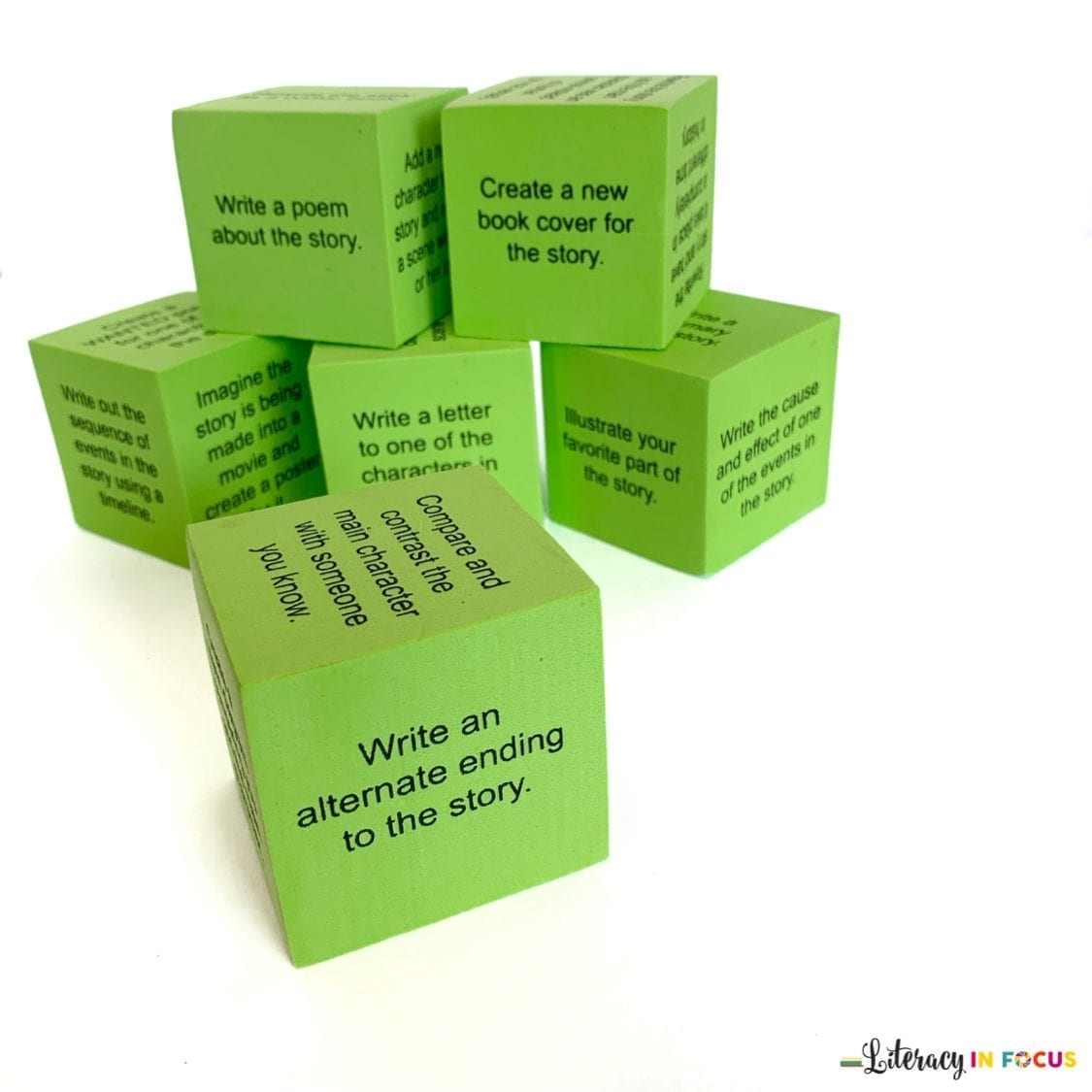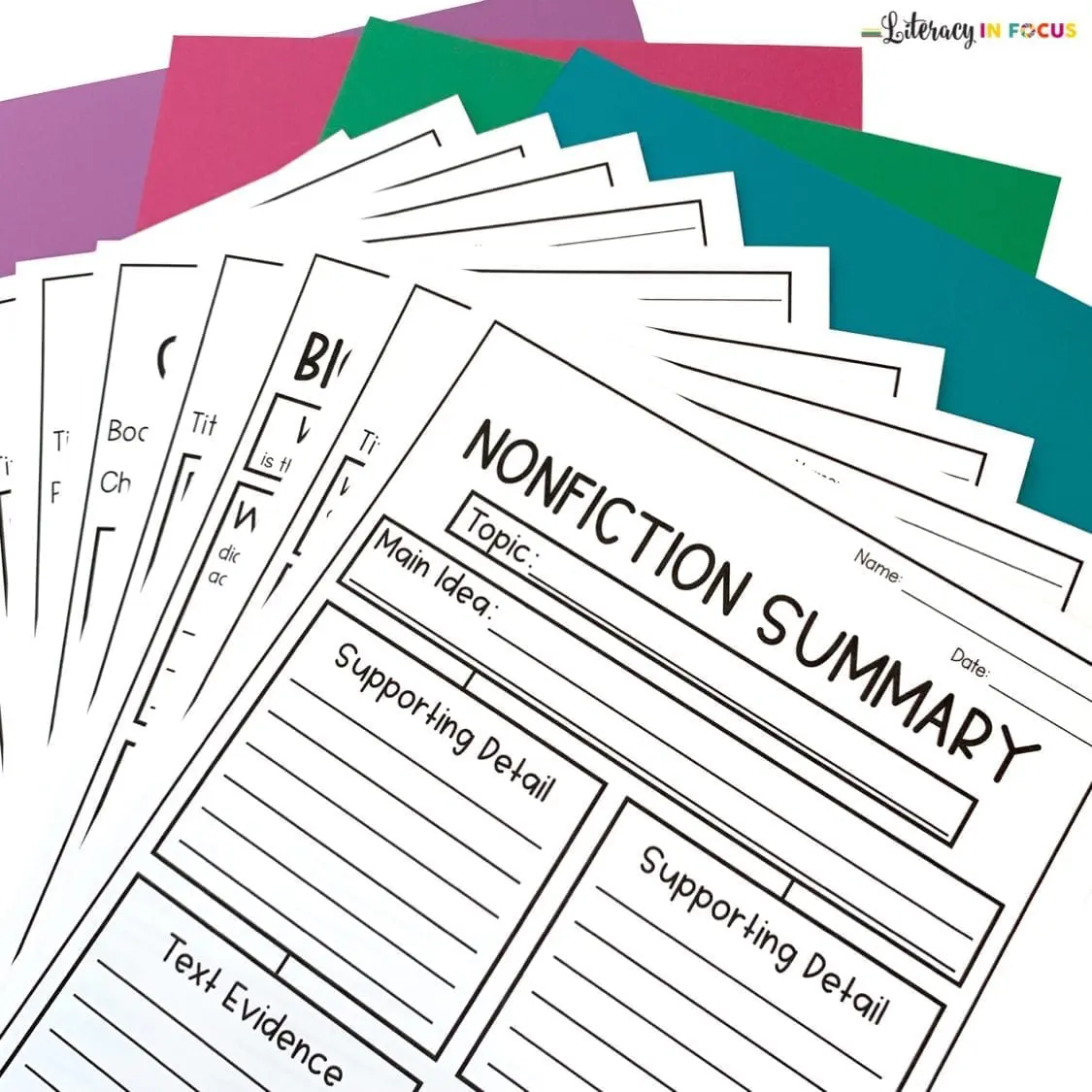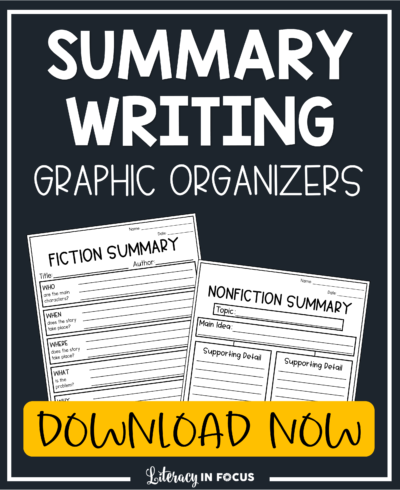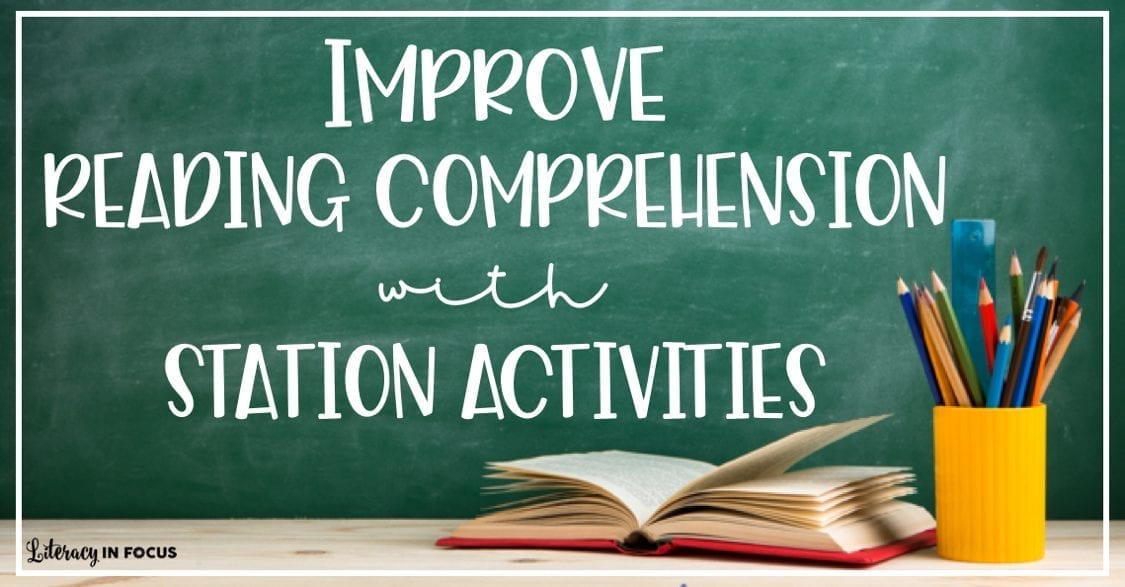
What’s not to love about learning stations? Getting students moving, working collaboratively, and interested in the content is a great way to increase engagement and focus. As teachers, we know that improving reading comprehension takes dedication, practice, and one-on-one coaching. In order to make a significant leap ahead in terms of reading comprehension, students need ample time and opportunities to work with the text. Next time you get to the end of a book, chapter, or article, try implementing literacy centers. Moving through the stations will give your students time to focus on the skills they need to become better readers.
Selecting a Text
Reading the text at least once together as a class is ideal. It’s important that any glaring confusion about the text is cleared up before beginning the center activities. A copy of the text for each student to utilize as they rotate through the stations is also a good idea. The length of text will depend on the abilities of your students. Ideally, the text will be complex enough to challenge students, but not so overwhelming that independently processing the content becomes impossible.
Timing
Determining the length of time students spend at each station will depend on the abilities of your students. Fifteen to twenty minutes per station will probably work well for most classes, but you will have a better idea once you get started. You can always adjust the time to match student needs.
Station One: Vocabulary Support
Teaching students to try and define unknown words found in the text will strengthen their reading comprehension skills. Identifying the words in context, rather than in isolation, is important because it provides students with a strong frame of reference for understanding and integration. There are a variety of ways to incorporate vocabulary support into your learning stations. You might even already have your go-to vocabulary resource ready to print. The activity can be as simple as locate four unknown words, define, and write a sentence for each. It can also be more structured. I like to use a process I call Focus on Five. It works with any text. It’s a structured approach for identifying, defining, and applying new terms found in the text. Read more about it here.
Station Two: Close Reading
Getting a chance to work with students in small groups is one of the reasons I love station activities. Take advantage of the small group setting and focus on comprehension with a close reading. During a close reading, you will read the text three times, focusing on a different comprehension skill each time. Completing the close reading in a small group will give you the opportunity to assess individual student progress and needs. Click here to read more about completing a close reading with your students.
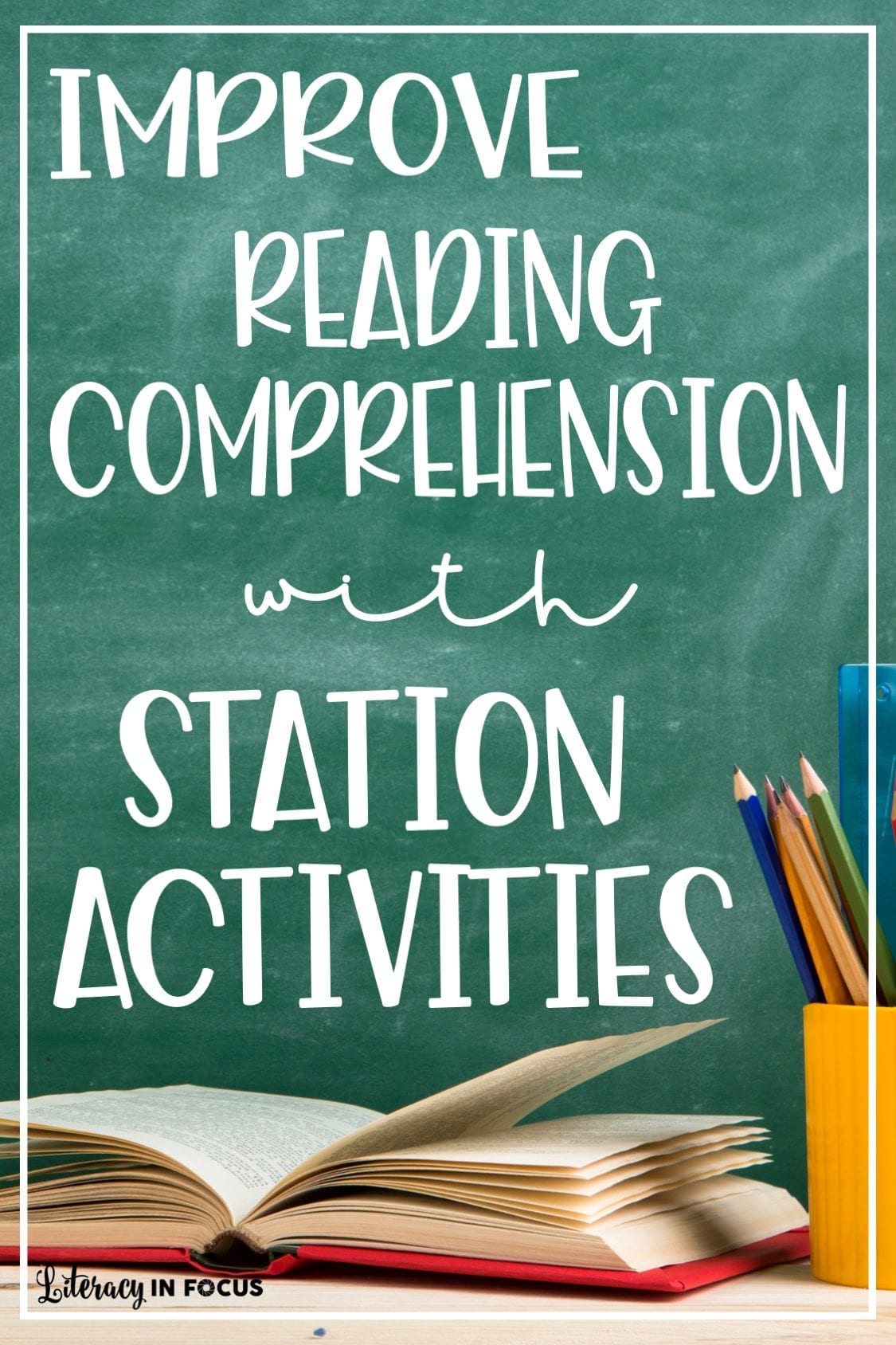
Station Three: Visualization
Visualization makes reading comprehension possible. When readers visualize, there is no right or wrong answer. Each reader will create a unique set of mental images based on the text.
As we read, we create mental images of what is happening in the story as it unfolds, based on what we already know and understand about the world. -Danielle Mahoney, Scholastic
Have fun with the visualization station. You can provide your students with a plethora of creative options, or you can stick to the essentials. It’s up to you. The options are endless – stickers, markers, construction paper, colored pencils, etc. It really depends on what you have access to, and what you are prepared to clean up when the activity ends! You can also be flexible with the visualization requirements: will your students be required to draw one picture, several pictures, or include captions? Again, the structure and format is extremely flexible.
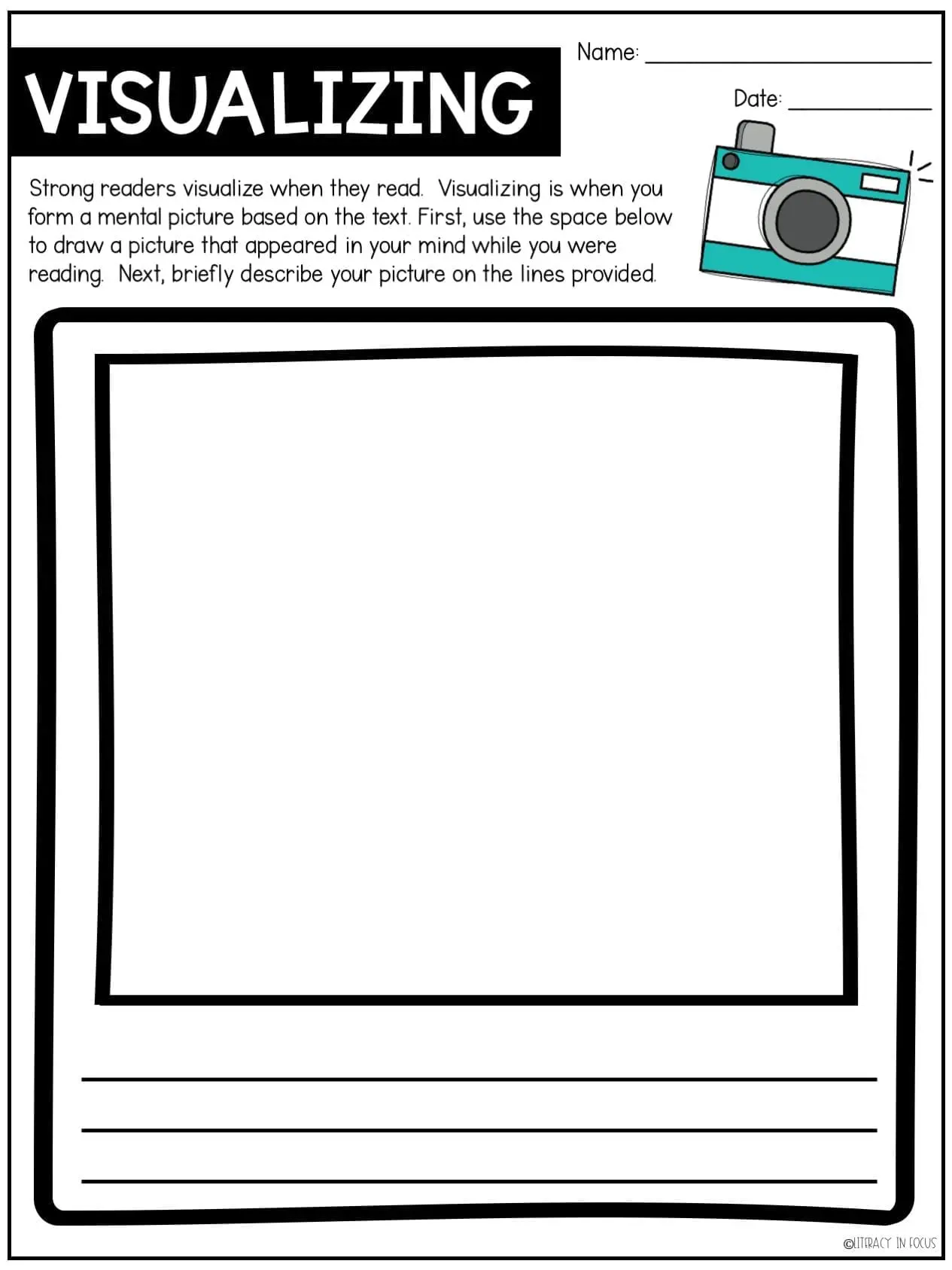
Station Four: Reading Comprehension Cubes
One of my favorite Amazon finds for the classroom are these Reading Comprehension Cubes. They are available for a variety of text types, and they are a hit with students. Each side of the cube poses a different question or activity, keeping students engaged and on task. The Reading Comprehension Cubes come in a package of six, which gives you tons of options for future use as well. If you have time, you can dive into a DIY project and create the cubes on your own using dice and pre-printed worksheet. Either way, it will most likely be the most popular station activity.
Station Five: Summarizing
Summary writing isn’t the easiest skill to master. It takes a decent amount of time and practice to be able to craft an effective summary. Students need to be able to summarize all types of texts, extracting only the main ideas and key details. Utilizing a graphic organizer at the summary writing station will help students narrow down and focus on the appropriate information. The inherent scaffolding a graphic organizer provides sets students up with a framework for picking and choosing content. Students can work from a pre-printed organizer or they can copy one you have drawn on the board. Click here to take a look at ten different summary writing graphic organizers available for download from Literacy in Focus on TpT.
Station Six: Text Structure
If your reading comprehension stations are centered around fiction text, utilizing a plot diagram works well for analyzing text structure. Download a free plot diagram here. Informational text gets a bit more complicated. Expository text is challenging for many students as it often deals with complex and unfamiliar content and is structured in a variety of ways. Like the summary writing station, a graphic organizer can be used at this station as well. Six ideas for graphic organizers are listed below.
- Explanatory: Students identify the topic and list supporting details.
- Informative: Students identify the main idea, supporting details, and textual evidence.
- Problem/Solution: Students identify the problem and solution presented in the text.
- Compare and Contrast: Students identify similarities and differences between two different topics or ideas.
- Cause and Effect: Students identify the cause and effect (in either order) presented in the text.
- Sequence of Events: Students list the events presented in the text in chronological order.
Station Seven: Text Connections
There are three levels of text connections that students can make when reading new texts: text-to-self, text-to-text, and text-to-world. Making authentic connections with the text is a skill that needs to be reinforced, and, with repeated exposure, will lead to improvement in reading comprehension. Read more about text connections activities here. Download everything you need for your text connections station from Literacy in Focus on TpT.
Text Connections Activities, Worksheets, Anchor Charts, & Posters from Literacy in Focus on TpT
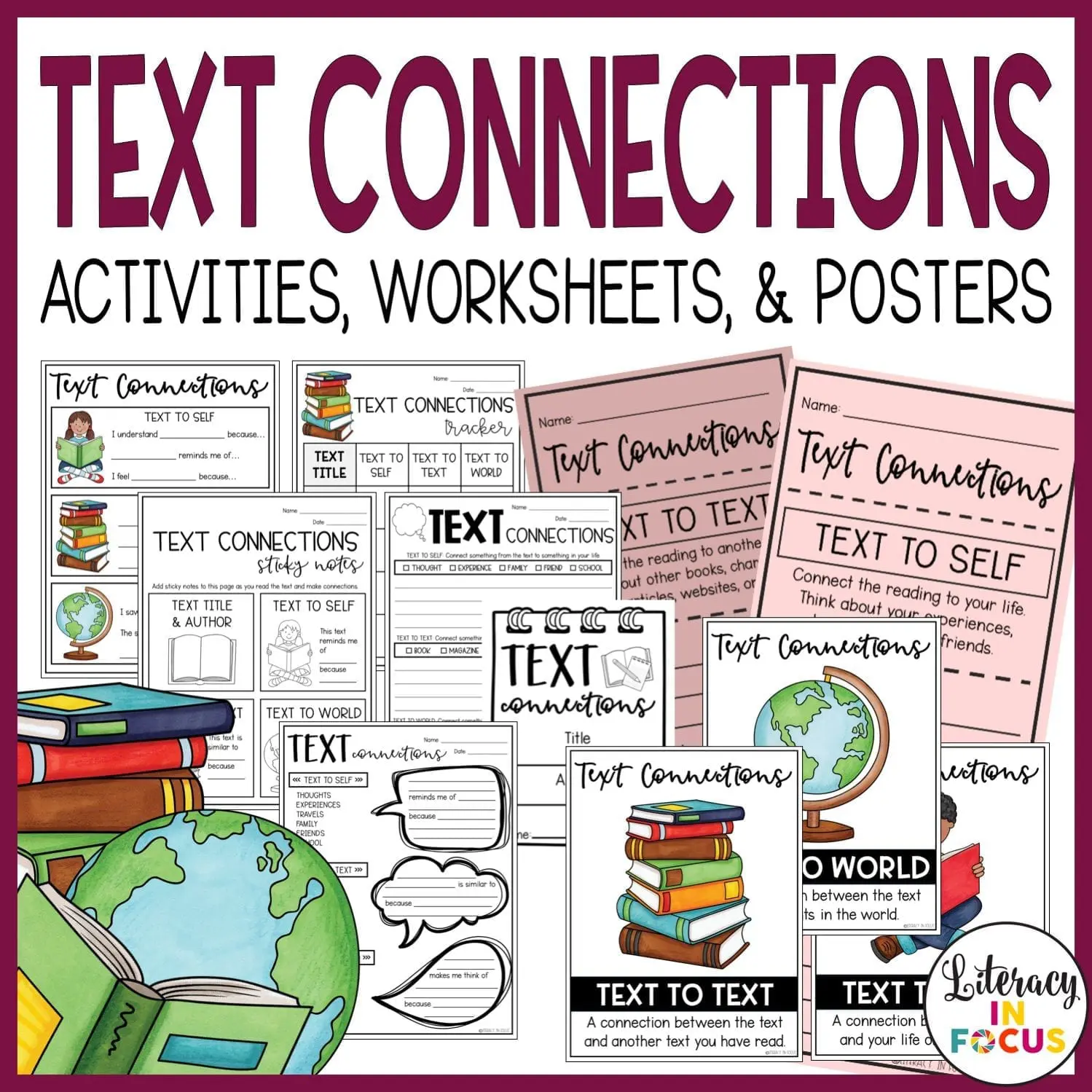
Aside from the benefits mentioned above, another great aspect of the reading comprehension stations is that they can be used again and again! Once you have finalized and adjusted the format and structure that best meets the needs of your students, you can apply the strategy with many different texts throughout the year. It takes time to improve reading comprehension skills, but, with repeated practice, you will see lasting results.
Visualizing Worksheet

